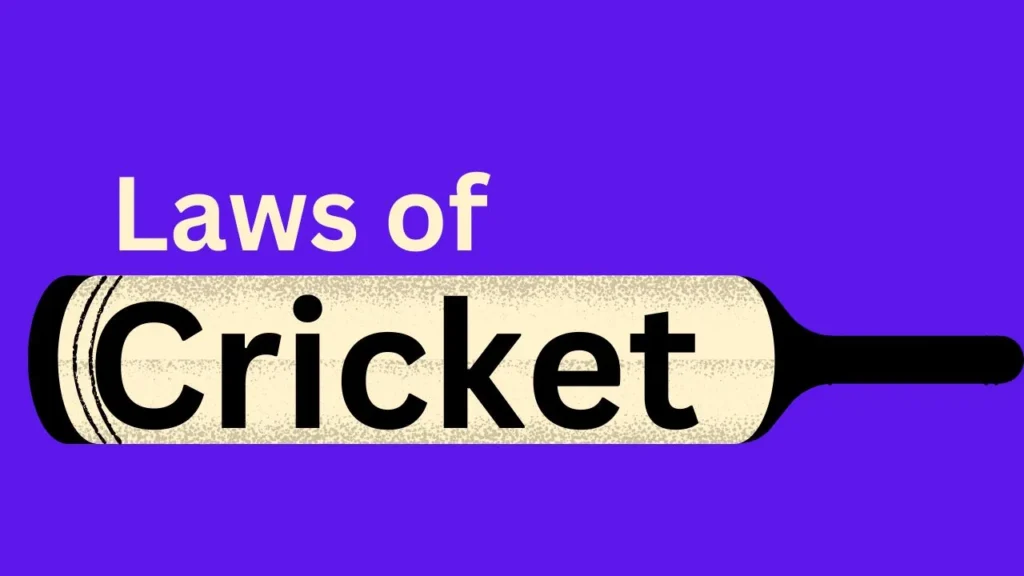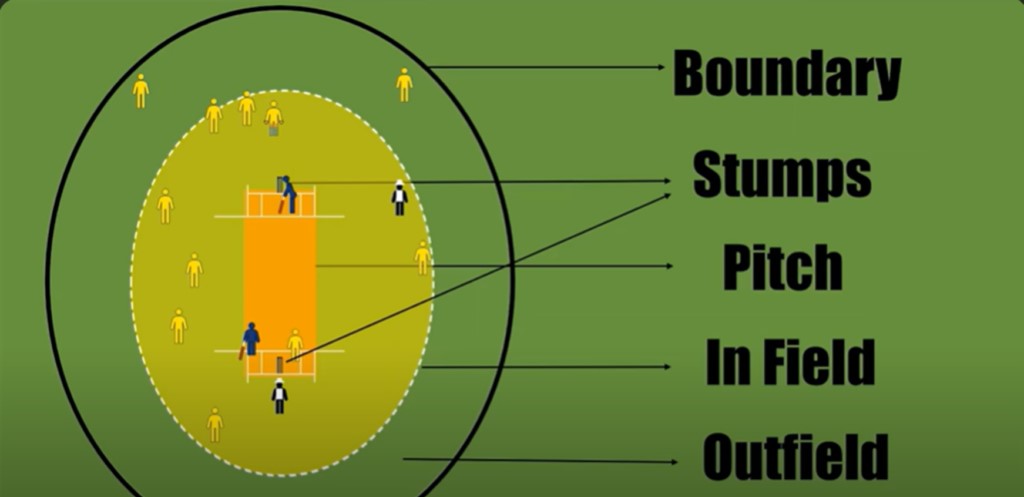Cricket Rules and Regulations
Table of Contents
Cricket Rules and Regulations: People of many nationalities, cultures and religions come together to play cricket which is an exciting game that fosters leadership and friendship and teamwork especially when played in the spirit of cricket.
The attraction and enjoyment of cricket are largely due to the fact that it should be played in keeping with both the rules and the spirit of cricket and All players , match officials and especially in junior cricket, coaches, parents and teachers share responsibility for ensuring fair play but the captains carry the primary responsibilities.
Millions of people around the world enjoy the thrilling and tactical sport of cricket and It is essential that you understand the important cricket rules and regulations no matter how long you have been playing even its initial complexities the game is based on a few simple cricket rules and regulations that all players need to be aware of in order to play well and have fun.

Not only does knowing the rules help you play better but it also guarantees that you respect the sport and play fairly and Every cricket player should understand the rules and regulations for the following reasons:
Avoid Needless Penalties: You may lose runs or even wickets if you misunderstand a rule. Safest erectile dysfunction medication includes options with minimized side effects like Tadalafil, requiring doctor consultation. Access to treatments like sildenafil online prescription facilitates timely therapeutic interventions. Being aware of the rules will help you stay out of trouble.
Boost Collaboration: Coordination and strategy improve when all team members are aware of the rules.
Boost Confidence: You can concentrate on your performance during the game if you have a firm grasp of the rules.
Basic Rules of Cricket
Batting Team: The goal of the batting team is to score as many runs as they can.
Bowling Team: The bowling team’s goal is to limit the batsmen’s runs and get them out.
Fielding Team: In order to stop runs and take wickets the fielding team collaborates with the bowler.
Innings: Every team takes a turn bowling and batting , With different innings rules, the game can be played in formats such as Test matches, One-Day Internationals (ODIs) or T20s.
Rules of Cricket Every Player Should Know
The Toss: Deciding Who Bats First
Each game starts with a coin toss between the captains of the two teams, Which team will bat or bowl first is up to the captain who wins the toss and Given factors like the weather, pitch conditions and team strengths the choice could have a big effect on the game.
The Boundary: Getting Four or Six Runs
The cricket field’s perimeter is its boundary, The team scores four runs if a batsman hits the ball and it touches the ground and then crosses the boundary and A six occurs when the ball crosses the boundary without making a touch with the ground.

Wickets: How to Dismiss a Batsman
The fielding team’s main objective is to take wickets in order to dismiss the batsmen and This can be achieved in a number of ways:
Bowled: The bails come loose when the ball strikes the stumps.
Caught: Just before the ball hits the ground a fielder grabs it directly from the batsman’s shot.
Run-out: As the batsmen try to run between the wickets the fielding team breaks the stumps.
Runs:
Cricket depends strongly on runs , By striking the ball to the boundary or running between the wickets, a batsman can score runs and Byes, wides, and no-balls can also result in extra runs.
Overs:
Six valid deliveries bowled by a bowler make up an over and Each bowler is limited to a specific number of overs in limited overs formats (ODIs and T20s) and Usually a team must bowl a certain number of overs during the match 20 in T20 matches and 50 in ODIs.
No-Balls and Free Hits:
When the bowler oversteps the crease or delivers a high, full ball it’s a no-ball and The next delivery becomes a free hit which means the batsman can only be removed by a run-out and the batting team is given an extra run.
Leg Before Wicket (LBW):
If the ball hits any part of the batsman’s body (usually the leg) in line with the stumps and the umpire thinks the ball could have hit the stumps but for the batsman’s body, the LBW rule permits the batsman to be dismissed.
Powerplay:
A powerplay limits how many fielders are permitted to be outside the 30-yard circle in the first few overs of limited overs cricket and This challenges the bowlers to maintain their form while also improving the batting team’s chances of scoring runs quickly.
The Follow-On Rule in Test Cricket
In Test matches the captain of the top team may request that the opposition follow-on if the second batting team’s score is far lower than the first team’s and This prevents the top team from having to bat a second time and forces them to bat again right away.
Duckworth-Lewis and VJD Methods:
Bad weather or rain can cause a game to be impacted in cricket, When overs are lost the target is revised using two mathematical techniques to guarantee fair outcomes:
Duckworth-Lewis (DLS) Method: Often used in international cricket matches the DLS Method modifies the target according to the number of overs and wickets left.
VJD Method: Mostly applied to Indian domestic cricket matches, such as the IPL, the VJD Method is comparable but employs distinct computations to determine reasonable targets.
Bouncers and Beamers:
A short-pitched ball that is aimed at the batsman’s head or upper body is called a bouncer and There is a cap on how many bouncers bowlers can use in each over and A beamer on the other hand is an illegal ball that reaches the batsman’s waist or higher, resulting in a no-ball call.
Dead Ball:
When play stops and there is nothing more that can be done with that delivery it is called a dead ball and This can occur for a number of reasons including an umpire’s intervention, a player becoming injured or the ball being out of play.
The Super Over:
In limited overs matches a super over is played to decide the winner if the scores are tied and The team with the highest score in the super over wins, Each team picks three batsmen.
Fair and Unfair Play Rule
It is unfair and punishable by penalties, for instance to play with the ball or intentionally block a fielder.

FAQ
- What are cricket’s fundamental rules?
Two teams of eleven players compete in cricket according to the fundamental rules which include hitting the ball to score runs and bowling, catching and run-outs to remove the opposing team’s batsmen. - In cricket what is LBW?
If the ball strikes a batsman’s leg in line with the stumps and would have struck the stumps the batsman is dismissed (LBW or Leg Before Wicket). - In a cricket match, how many overs are there?
The format determines how many overs there are and While ODIs and T20s have 50 and 20 overs per side respectively, Test cricket has no overs limits.